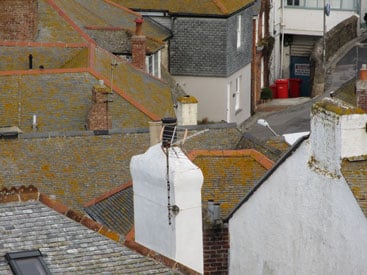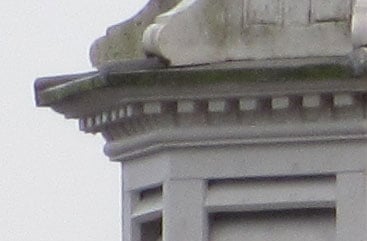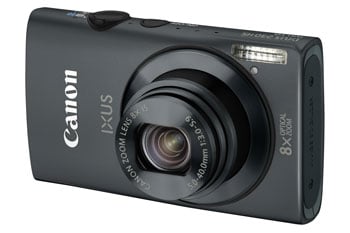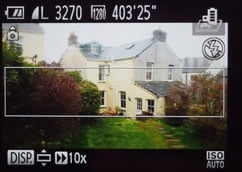Canon ELPH 310 HS / IXUS 230 HS
-
-
Written by Gordon Laing
Intro
The Canon PowerShot ELPH 310 HS, known outside North America as the IXUS 230 HS, is a 12.1 Megapixel super-slim compact in the typical ELPH / IXUS mould. From here on in I’ll refer to it as the ELPH 310 HS / IXUS 230 HS.
The ELPH 310 HS / IXUS 230 HS features an 8x optical zoom lens, which in the current ELPH / IXUS line-up is only out-reached by the 12x zoom of the IXUS 1100 HS / ELPH 510 HS. The lens is optically stabilised with Canon’s new Intelligent IS system which applies stabilisation best suited to the subject having first analysed the scene. The HS suffix stands for High Sensitivity and denotes the presence of a back-illuminated CMOS sensor, this time with 12.1 Megapixel resolution. Along with claims of low noise performance the sensor endows the camera with relatively fast continuous shooting and 1080p HD video; it can also shoot super slow motion movies.
The IXUS 230 HS / ELPH 300 HS also features Canon’s Smart Auto mode with scene detection as well as Program Auto exposure, but lacks manual and semi-auto exposure modes. It also includes Creative effects including the faux tilt-shift Miniature effect which can be used for movies as well as stills. Find out if this is the point-and-shoot for you in our full review!
 |
Canon ELPH 310 HS / IXUS 230 HS Design and controls
The ELPH 310 HS / IXUS 230 HS is available in a variety of colours including black, silver, blue and green. It has a reassuringly solid feel and despite the lack of any grip-enhancing body styling it’s surprisingly easy to hold and its 96 x 57 x 22mm dimensions make it as pocketable as a phone.
Though the ELPH 310 HS / IXUS 230 HS shares a common body shape with other models in the range the control layout is something of a departure from the ELPH / IXUS norm. The shutter button and on/off switch are where you’d expect and the rear panel layout is conventional enough, with a four-way controller, dedicated movie record and playback buttons. But where is the menu button? On the right side of the camera along with a switch for selecting auto exposure mode in preference to the menu selected alternative, be it Program Auto, one of the scene modes.
It takes a little bit of getting used to, but does make it possible to fit a 3 inch LCD screen on the back and still have room for the other controls without things getting cluttered. The ELPH 310 HS / IXUS 230 HS screen has 461 thousand pixels and provides a clear and punchy image that’s viewable from even quite acute horizontal and vertical angles in all conditions other than in bright sunlight.
 |
The built-in flash is located on the top left corner and you need to be careful not to obscure it with your left index finger. It has a maximum range at the wide angle lens setting of 4 metres. Though the ELPH 310 HS / IXUS 230 HS doesn’t have a hotshoe it can be used with Canon’s HF-DC1 and HF-DC2 external slave flash units. The flash can be used in slow sync as well as auto modes and the AF illuminator on the front of the camera can be configured to double-up as a red-eye reduction lamp, illuminating just prior to an exposure to force people’s irises to contract. You can also apply a software red-eye correction, pre or post-shooting.
The ELPH 310 HS / IXUS 230 HS ports – a mini HDMI connector and USB/AV are located forward of the menu button and mode switch on the right edge the body. A USB cable is supplied to transfer photos and video to a PC, but you’ll need an HDMI cable or optional AVC-DC400ST cable to connect to a TV.
Canon ELPH 310 HS / IXUS 230 HS lens and stabilisation
The 8x optical zoom lens on the ELPH 310 HS / IXUS 230 HS has an equivalent range of 28 – 224mm. Though not in the same league as the 12x range of the ELPH 510 HS / IXUS 1100 HS, this 8x lens will get you close enough to the action for most kinds of shooting, but if you like to shoot a lot of sports or wildlife you may find it doesn’t quite get you there. You also sacrifice a little at the wide angle end compared with the 24mm field of view of the ELPH 300 IS / IXUS 220 HS .
ELPH 310 HS / IXUS 230 HS coverage wide |
ELPH 310 HS / IXUS 230 HS coverage tele | |
 |  | |
| 5-40 mm at 5mm (28mm equivalent) | 5-40mm at 40mm (224mm equivalent) |
It’s one of a handful of compacts in the current Canon line-up to feature Canon’s new ‘Intelligent IS’ optical stabilisation which analyses the scene and sets the appropriate stabiliser mode. There are three settings in the menu – continuous, shoot only and off. The camera automatically chooses one of seven stabiliser modes including the horizontal and vertical panning modes that you used to have to select manually. It has a mode especially for macro shooting and can also tell when the camera is on a tripod and turns stabilisation off.
ELPH 310 HS / IXUS 230 HS 5-40mm f3-5.9 IS Off/On (Continuous) | ||||
 |  | |||
100% crop, 5-40mm at 40mm, 100 ISO 1/8th, IS off. |
100% crop, 5-40mm at 40mm, 100 ISO 1/8th, IS on. | |||
To test the stabilisation on the ELPH 310 HS / IXUS 230 HS I took a series of hand-held shots at different shutter speeds with the lens set to its maximum zoom setting of 224mm (equivalent), both with IS set to Continuous and turned off. The crops above are from shots taken at 1/8th of a second with the IS turned off (left) and on Continuous (right). As you can see, the ELPH 310 HS / IXUS 230 HS is capable of an impressive 4 to 5 stops of stabilisation.
Canon ELPH 310 HS / IXUS 230 HS shooting modes
The ELPH 310 HS / IXUS 230 HS has Creative filter effects including Monochrome, Toy Camera, Fish-eye, Super Vivid, Poster Effect, Colour Accent, Colour Swap and Miniature. These are now incorporated into the exposure mode menu along with the scene modes. Like other HS-series models, the ELPH 310 HS / IXUS 230 HS offers a Handheld Night Scene mode to reduce noise (see results pages) and also a Best Image Selection mode which takes five shots in rapid succession and chooses the best one, which generally means the one with least camera shake and subject blur, and saves it to the card. It’s useful in situations where the light means you can’t be confident of getting a good shot, but the fact that it’s limited to 3M resolution is somewhat disappointing.
 |
The Smart Shutter scene mode is included which can fire the shutter up to 10 times when a smile is detected, and includes Face and Wink self-timer functions so that you can include yourself in a group photo without dashing around like a lunatic.
There’s also Canon’s innovative movie digest mode which compiles short video clips automatically captured before each shot you take. It’s a fun to see a video emerge of your day’s photo-taking, especially of people as they perfect their poses, although the downside is the continuous buffering of video will see your batteries deplete more quickly, so beware if you’re out without a spare.
Canon ELPH 310 HS / IXUS 230 HS movie modes
The ELPH 310 HS / IXUS 230 HS’ best quality movie mode is 1080p24 which will make it a popular choice with movie makers who prefer the film-like quality of video shot at 24 frames per second. There are also 720p and standard resolution 640 x 480 modes both at 30fps.
Movies can be shot in Program auto exposure mode or Smart Auto mode which takes advantage of scene detection to determine the correct exposure. There’s no manual control over exposure, but you can use the exposure compensation setting to adjust the exposure by plus or minus two stops prior to pressing the movie record button.
You can also shoot video using some of the Creative filter effects including Miniature mode. By default, Miniature mode movies are shot in standard definition 640 x 480 format. If you want to shoot in 720p mode you have to change the photo aspect ratio to 16:9. This is an odd way of doing things; we’d expect that the best quality mode to be the default and it would make more sense for the movie mode settings to follow whatever was set for ‘normal’ shooting, rather than tucked away in the still image formats. One of the advantages that Canon’s Miniature mode has over other variants is that you can select the focus zone area. This is done by moving a rectangular frame up and down the screen and can be set in both horizontal and vertical planes either for portrait shots or where the subject just works better with the blurred regions to the left and right of the focus zone, rather than top and bottom. You cans ee an example below.
Finally, the ELPH 310 HS / IXUS 230 HS also has Super Slow Motion movie mode which shoots 640 x 480 clips at 120fps and 320×240 clips at 240fps. When played back at 30fps these are slowed-down by a factor of 4x and 8x respectively. You can see examples in our Canon SX40 HS review.
Movie shooting employs Dynamic IS which provides extra stabilisation to iron out wobbles cause, for example by walking and shooting a the same time. There’s also a Powered IS mode which works in addition to Dynamic IS to provide extra stability at the telephoto end of the zoom range. This works very effectively as you can see in the clip below.
| |
|---|---|
|
This hand-held panning shot shows just how effective Canon’s new Powered IS is at keeping the frame steady at the full 8x extent of the ELPH 310 HS / IXUS 230 HS.
| |
|---|---|
|
Good auto exposure and focus on this tripod mounted shot, but the ELPH 310 HS / IXUS 230 HS’ audio quality is disappointing with a lot of clicking and popping as well as a very audible zoom motor.
| |
|---|---|
|
Indoors in low light the ELPH 310 HS / IXUS 230 HS produces good results, but, again, the audio is marred by the clicking of the autofocus motor.
| |
|---|---|
|
Like all the current IXUS models, the ELPH 310 HS / IXUS 230 HS can shoot in miniature mode at 720p resolution if you set the aspect ratio to 16:9, otherwise it defaults to VGA (640 x 480).
Canon ELPH 310 HS / IXUS 230 HS
handling
Press the on/off button and the ELPH 310 HS / IXUS 230 HS is ready to take a shot in about two and a half seconds, which is a fairly average response time. The 8X zoom is nice and responsive and covers the range swiftly, while also providing good fine motor control, in other words it’s very nudgeable. It emits a slight whine in normal use, and although you can’t always hear it while filming movies, be in no doubt the operational sound is being picked up by the built-in stereo mics.
 |
 |
 |
As I mentioned earlier, the positioning of the menu and mode switches on the right is something you quickly get used to, but the func menu, originally a shortcut for frequently used main menu options feels a little overburdened. This is mainly due to the way Canon has added all the exposure mode options including scene modes, Creative Filter effects and movie effect modes to one exposure mode sub menu. In all there are 22 options on this menu which means there’s often a lot of scrolling involved to find what you’re looking for.
Canon’s face detect AF is one of the most reliable around and is especially good at locking onto faces even when they’re some distance form the camera and turned to partial profile. Like all such systems it does struggle a bit in poor lighting though. Likewise, in good lighting conditions the tracking AF mode does a good job of following a target object in the frame. If all else fails there’s a centre mode to fall back on with a choice of two central AF area sizes.
In continuous shooting mode the ELPH 310 HS / IXUS 230 HS managed 2.4 frames per second – a little slower than the quoted 3.5fps. It also has a reduced resolution High Speed burst mode which produces 3 Megapixel shots at a rate of 7.2fps again slightly slower than the quoted rate.
The ELPH 310 HS / IXUS 230 HS has a 12.1 Megapixel back-illuminated CMOS sensor which produces 4:3 still images with a maximum size of 4000 x 3000 pixels and has two JPEG compression quality settings. On the best quality fine setting image file size around 3MB. The ISO range is 100 to 3200 ISO and the shutter speed range is 15 seconds to 1/2000th of a second.
To see how the quality of the ELPH 310 HS / IXUS 230 HS measures-up in practice, take a look at our real-life resolution and high ISO noise results pages, browse the sample images gallery, or skip to the chase and head straight for our verdict.




